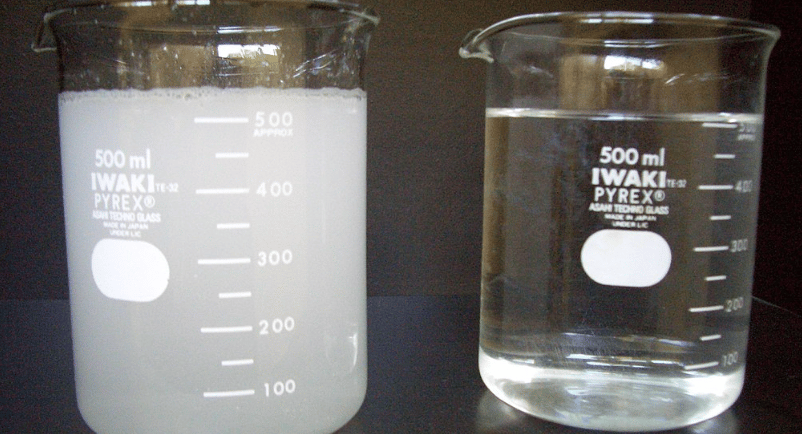Difference: Micro and ultra fine bubbles
The difference between Micro and Ultrafine bubbles
INTRODUCTION TO NANOBUBBLES
7/7/20254 min read


The difference between microbubbles and Ultrafine bubbles (UFBs)
As UFB technology gains traction across industries, terms like microbubbles and ultrafine bubbles (UFBs) are increasingly used. But despite the similarity in naming, these two types of gas bubbles are fundamentally different in both physics and function.
In this article, we’ll explore what distinguishes microbubbles from ultrafine bubbles, and why understanding the difference is crucial when selecting or designing systems that rely on bubble behavior.
Bubble size and visibility
The most fundamental distinction lies in bubble diameter. Microbubbles are typically defined as gas bubbles with diameters ranging from approximately 10~50 micrometres. In contrast, ultrafine bubbles are at least a hundred times smaller, with diameters below 0.1 micrometers (or 100 nanometres).
Because of this size difference, microbubbles may be visible in water, often producing a cloudy or milky appearance. Ultrafine bubbles, on the other hand, are not visible to the human eye and do not alter the appearance of the liquid in which they are suspended.
Buoyancy and Stability
Microbubbles tend to rise slowly through the liquid and collapse upon reaching the surface. Their rising speed is usually measured in milimetres per second, meaning that the residence time in the liquid is short, often lasting seconds to minutes.
Ultrafine bubbles behave very differently. Due to their nanoscale size, their buoyancy becomes negligible, and they exhibit Brownian motion rather than rising. As a result, ultrafine bubbles can remain stably suspended in water for days or even weeks. This prolonged residence time is one of the key factors that make UFBs functionally distinct.
Applications
Microbubble technology is a well-established and highly effective solution for aeration and wastewater pre-treatment. Microbubbles attract and attach to positively charged particles like oils and grease, causing them to agglutinate into larger clumps. These bubble-laden clumps then slowly rise to the surface, continuing to gather more particles. This efficient flotation process makes microbubbles ideal for removing fats, oils, grease, and suspended solids, significantly improving the efficiency of subsequent treatment stages in wastewater plants.
Ultrafine bubbles (UFBs), by contrast, are often employed in more advanced applications due to their unique properties. Unlike microbubbles, UFBs stay suspended in the water and can also reduce its surface tension, allowing them to penetrate tiny spaces that other technologies simply can't reach.
This remarkable ability enhances their interaction with other materials in profound ways. Imagine extracting more flavor from a tea leaf, or unlocking richer aromas for premium gin, beer, whisky, and other spirits. This opens doors to creating entirely new formulas in the food, pharmaceutical, and cosmetic industries.
Beyond flavour extraction, UFBs also vastly improve surface cleaning, efficiently dislodging even the smallest residues, particles, biofilms, and a wide array of contaminants.
Generators
Generating microbubbles is relatively straightforward, often achieved with adapted Venturi injectors, diffusers, or porous materials. While these methods primarily produces microbubbles, they might also produce an extremely small quantity of ultrafine bubbles (UFBs). Although, the presence of larger microbubbles causes UFBs to agglutinate and form bigger bubbles, effectively eliminating any trace of UFBs within seconds, many manufacturers market their device as "micro AND nanobubble generator".
Despite this, these mislabeled "micro and UFB" generators are widely available and relatively inexpensive, they fail to reliably produce bubbles in the ultrafine range, largely delivering microbubbles instead.
Ultrafine bubble generation, however, demands more precise control over operating parameters to ensure the generator exclusively produces bubbles around 100nm in size. Verifying true UFB production is crucial and typically requires advanced characterization methods such as nanoparticle counters or dynamic light scattering, which can be both expensive and complex.
For a simpler, initial confirmation, you can observe two key indicators. First, UFB are invisible to the human eye, therefore, the water containing UFBs must be clear and transparent, with no milky or cloudy appearance. A cloudy look indicates the presence of microbubbles, that will UFBs disappear in seconds.
Additionally, a practical way to indirectly confirm UFB presence is by testing their unique cleaning power. If you draw a small mark on your arm with a permanent marker, you'll find that true UFB water can remove the ink, which is impossible with other types of water.
Final Considerations
For professionals looking to leverage UFB technology, the choice of generator—especially distinguishing between true ultrafine bubble (UFB) and mislabeled microbubble devices—has direct implications for performance and outcomes. Both microbubbles and ultrafine bubbles have distinct applications where they excel.
Microbubbles are well-suited for many practical and established processes, primarily enhancing gas transfer into liquids, such as in aeration and flotation systems.
By contrast, ultrafine bubbles unlock new functionalities entirely. These include advanced applications like residue-free washing, efficient biofilm removal, and even the development of groundbreaking new products across various industries.
Understanding this fundamental difference and the specific functional applications of each bubble type is the crucial first step. It empowers you to design systems and select equipment that precisely align with your goals, whether you're focused on experimentation, product development, or full-scale deployment.
Want to work with real UFBs?
If you are looking for a cost-effective yet reliable ultrafine bubble (UFB) generator, NanoWash is a compelling option. Engineered in Japan specifically for domestic use, NanoWash achieves affordability by selecting accessible materials and narrowing its operational range. NanoWash performs exceptionally well when connected to a typical tap water supply, which offers stable pressure, temperature, and water quality. Under these conditions, NanoWash consistently delivers a high-density UFB output, producing approximately 180 million bubbles per millilitre with an average diameter of 100 nanometres.
However, it is important to note that NanoWash is not intended for large-scale industrial environments where temperature fluctuations, high pressure pipes, corrosive chemical exposure, or mechanical stress are normal factors. Its performance is optimized for indoor use within controlled parameters, making it ideal for applications that require verified UFB output at a fraction of the cost.
Explore how NanoWash can help you move your ideas forward.
